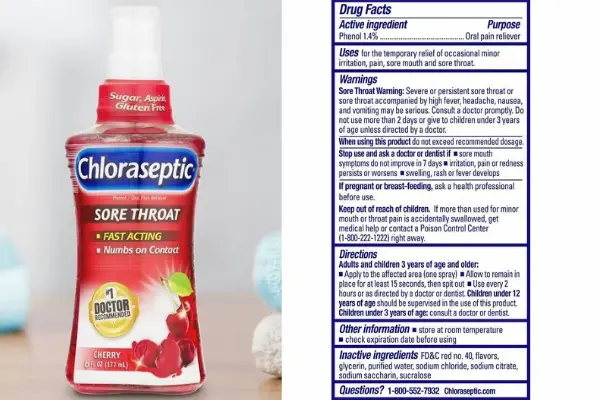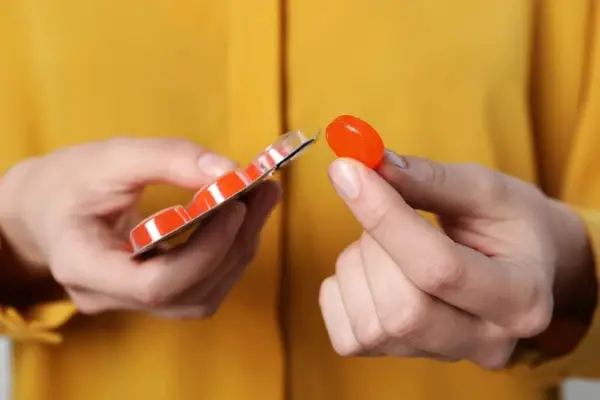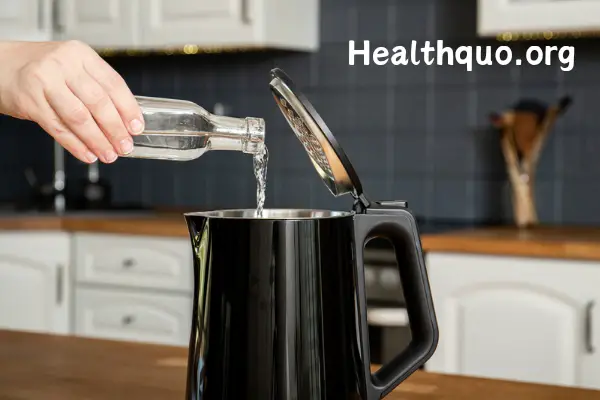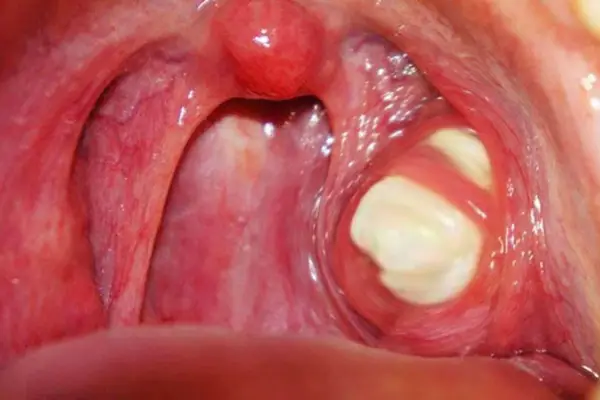It is impractical to use Chloraseptic spray without swallowing traces of it, even though you spat it out as instructed. But the focus here is on individuals who swallowed the spray accidentally or those who have been swallowing the spray because they are just not aware of the correct usage directions.
Well, the amount of phenol in a few sprays of Chloraseptic spray is unlikely to lead to acute systemic poisoning when ingested. Even gastrointestinal burns are rare. More commonly, the corrosive effect of the spray can lead to irritation of the esophagus and stomach, with the patient often complaining of mild stomach upset or throat tickle. Drinking water may help reduce the irritation
According to the CDC, the lowest lethal concentration upon ingestion of phenol is between 50 to 500mg in young children and between 1 to 32g for adults. Also, the high rate of absorption of phenol makes other routes of exposure equally or more dangerous.
When Chloraseptic spray is exposed to the eye, it should be rinsed off quickly and medical intervention should follow.
Composition In Chloraseptic Spray
Chloraseptic throat sprays typically contain phenol 1.4% as their active ingredient. Phenol is an organic compound that has antiseptic and analgesic properties, making it effective in numbing the throat and reducing discomfort from sore throats or minor mouth irritations.
The spray may also contain other ingredients such as water, glycerin, flavorings, and alcohol, which help in delivering the active ingredient and improving the product’s shelf life and taste.
Is Chloraseptic Spray Toxic When Swallowed?
When used as directed, Chloraseptic spray is safe and effective for relieving sore throat symptoms. To begin with, do not use the Chloraseptic spray for children below 3 years. The recommended dosage for children between 3 and 12 years is 3 sprays every 2 hours while adults can receive 5 sprays at the same time interval.
After application, the spray should be left in the mouth for 15 seconds before it is spat out. If you don’t spit out the spray at the specified time, it is eventually swallowed leading to irritation and corrosive injuries along the gastrointestinal tract.
Remember, the active ingredient in Chloraseptic spray is phenol and even in concentrations as low as 1%, phenol is capable of usual burns, even though this is not the typical case.
The manufacturer also cautions against the use of Chloraseptic spray for more than 2 days except when directed by a doctor.
So, small amounts swallowed accidentally during normal use are usually not harmful, but ingesting, say a whole bottle of the spray, can lead to phenol poisoning. Symptoms of phenol poisoning may include nausea, vomiting, diarrhea, abdominal pain, and in severe cases, respiratory difficulties, seizures, or coma.
Home Care
If Chloraseptic spray has been swallowed in small amounts, there are a few immediate steps you can take at home to manage potential irritation:
1. Drink Water: Drinking water or milk can help dilute the phenol and reduce throat and stomach irritation.
2. Observe for Symptoms: Keep an eye on any signs of discomfort or adverse reactions such as nausea, vomiting, or severe throat irritation.
3. Avoid Eating Irritating Foods: Spicy or acidic foods can exacerbate irritation. Opt for bland, soft foods until symptoms improve.
Treatment
In cases where a significant amount of Chloraseptic spray has been ingested, especially concerning young children, or if symptoms persist or worsen, call poison control at 1-800-222-1222 or see your doctor ASAP.
Treatment may involve:
1. Supportive Care: Management of symptoms such as nausea, vomiting, and diarrhea. This can include hydration and electrolyte balance restoration.
2. Monitoring: In some cases, especially with significant ingestion, hospitalization for observation and supportive care might be necessary.
3. Activated Charcoal: If seen within a short time after ingestion, activated charcoal may be administered to limit absorption. However, this is typically not recommended for home use without medical supervision.
How To Apply Chloraseptic Spray
To minimize swallowing Chloraseptic spray while still obtaining its benefits, open your mouth wide to expose the throat fully. Then, hold the spray nozzle close to the mouth and aim it towards the back of the throat.
After spraying, try to keep your mouth open and avoid swallowing for at least 15 seconds. This allows the medication to take effect on the throat tissues. Do well to spit out after 15 seconds to avoid swallowing the medication.
Prognosis
For individuals who have swallowed small amounts of Chloraseptic spray, the prognosis is generally good, and any irritation is likely to be mild and temporary. Most symptoms can be managed at home, and they typically resolve without long-term effects.
In a case where a significant amount is ingested, or where symptoms are severe or persist, the prognosis depends on the timeliness of the medical treatment and the amount ingested. With proper medical care, even in these situations, individuals can recover without long-term health effects.





